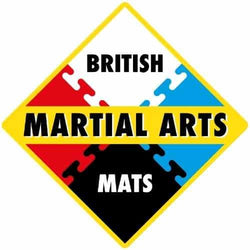What is a REACH testing?
A REACH test report refers to controlled certified lab test that the mats comply with the
REACH regulations. REACH stands for Registration, Evaluation, Authorization, and Restriction of Chemicals. It is a regulation adopted by the European Union to protect human health and the environment from the risks posed by chemicals.
REACH requires manufacturers, importers, and downstream users to ensure that their products do not contain substances that are on the list of Substances of Very High Concern (SVHC) above a certain concentration. For mats, this would involve ensuring that none of the materials used to manufacture the mats contain any restricted substances above the allowable limits.
Having a REACH la report means that the mats have been tested and registered as being compliant with the requirements set forth by the REACH regulation. This is particularly important for companies that want to export their mats to the EU market, as non-compliance can result in products being barred from entry or removed from the market, as well as potential fines and other legal consequences.
What does the CE mark mean with respect to mats?
The CE marking is a certification mark that indicates conformity with health, safety, and environmental protection standards for products sold within the European Economic Area (EEA). For EVA (Ethylene-Vinyl Acetate) jigsaw mats, a CE test certificate signifies that the product has been assessed and found to comply with the relevant EU requirements for safety, health, and environmental protection.
In the context of EVA jigsaw mats, the specific standards – EN 71-1:2014 and A1:2018, EN 71-2:2020, and EN 71-3:2019 and A1:2021 – are part of the EN 71 series, which are the European Standards for the safety of toys. These standards are also applicable to products like mats when they are intended for use by children.
Here's what each part of the EN 71 standards refers to:
-
EN 71-1:2014 and A1:2018: This part of the standard specifies safety requirements for physical and mechanical properties. It addresses potential risks associated with toys, such as sharp points, small parts that could be swallowed, and the strength of toys to avoid collapse during use. For mats, it would cover aspects like edging, padding, and the sturdiness of the interlocking pieces.
-
EN 71-2:2020: This part sets forth requirements for the flammability of toys. Mats tested against this standard would be assessed to ensure that they are not easily flammable and do not pose a fire hazard, especially since they are intended for use in children's environments.
-
EN 71-3:2019 and A1:2021: This section relates to the migration of certain elements, which includes testing toys to prevent toxic exposure to substances like lead, cadmium, and other heavy metals that might be harmful if ingested or inhaled by children.
If EVA jigsaw mats have been tested and assessed against these parts of the EN 71 standards and carry a CE marking, it means they have passed the necessary evaluations to confirm that they are safe for children to use. This includes being made from materials that are safe and non-toxic, are not a fire hazard, and are structurally sound and safe for physical activity.
Having this certification is crucial for manufacturers and distributors because it allows them to sell their products in the EU market, and it also provides assurance to consumers that the products meet rigorous safety standards.
Fire Regulation tests in respect of Lead, Phthalates and Fire safety.
A CRT certificate that includes testing for phthalates, lead, and fire safety in the context of martial arts mats would likely be a document issued by a regulatory body or a certified testing laboratory. It would certify that the mats have been tested and meet the specific safety standards regarding the presence of phthalates and lead, as well as adherence to fire safety regulations.
Here's how such a certificate could be described:
-
Compliance: The certificate confirms that the mats comply with relevant national and international safety standards for harmful substances and fire safety. This might involve regulations like the EU's REACH, the U.S. Consumer Product Safety Improvement Act (CPSIA), or other similar standards.
-
Phthalates Testing: The mats have been tested to ensure that they do not contain phthalates above certain concentration levels, particularly those phthalates that are restricted due to potential health risks.
-
Lead Testing: The mats have been analyzed for lead content, ensuring that the levels are below the maximum limits imposed by safety regulations, which is particularly important for children's safety.
-
Fire Safety Testing: Fire resistance tests have been conducted to ascertain that the mats meet the required flammability standards, reducing the risk of fire hazards and ensuring that the mats are safe to use in various environments.
-
Certification Details: The certificate would detail the specific tests performed, the standards applied, the dates of testing, and the results achieved. It may also list the accrediting agency and the unique identifier for the certification process.
Such certification is vital for manufacturers and sellers to demonstrate their commitment to safety and to gain consumer trust. It also ensures that their products can be legally sold in markets that have strict regulations on material safety and consumer health protection.


